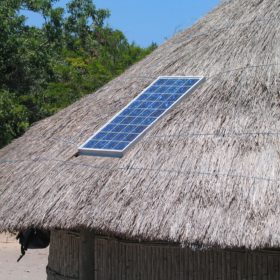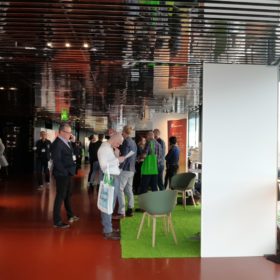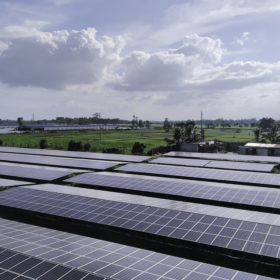Hungary launches first renewables auction and tops 1.1 GW of solar
The EU member state added 418 MW of new solar in the first six months of the year and its energy regulator expects another 1.4 GW in the years ahead, as a result of the METAR incentives scheme introduced in 2017. The regulator has also announced a pilot renewables auction with the results expected early next year.
The weekend read: PV could help clear Indonesia’s air
The Institute for Essential Services Reform (IESR), an Indonesian think tank, has reported that the country has the potential to install up to 655 GW of rooftop PV capacity. Contrast that with a current installed capacity of just 100 MW, and it’s clear that solar PV still has a long way to go before it reaches its potential throughout Indonesia. Given the poor air quality in many heavily populated cities across the archipelago, PV deployment is long overdue in the Southeast Asian nation.
Germany added 2.9 GW of solar in nine months
In September, PV systems with a total generation capacity of 287 MW were registered in the country. The feed-in tariff has fallen again for this quarter as a result of the new capacity additions.
Spain and Brazil the world’s ‘solar investment hotspots’ but eyes on Vietnam
Analysts at Fitch Solutions have published a report singling out Spain and Brazil as ‘outperformers’ in the global solar market and labelled Vietnam the “market to watch”. The analysts expect surging growth from the Southeast Asian nation to continue in the coming decade.
Off-grid solar sector witnesses sales of 4.1 million products in six months
Industry body Gogla and the World Bank’s Lighting Global program said the last six months set a record for off-grid solar deployment. Solar home systems and other small off-grid appliances are being used in ever larger numbers.
Indonesia improves rules for rooftop PV
The government has amended two regulations and introduced a new one to spur development of rooftop PV. The new provisions increase the size of systems eligible for net metering payments and reduce fees for industrial installations.
When are solar panels acceptable on historic buildings?
A study from Sweden seeks to consider how PV could be sympathetically installed on historic buildings. The researchers propose a target-based approach for assessing panel visibility.
Swedish Solar Expo touts solar and hydrogen community project
Where seasonal storage is paramount, hydrogen comes into play. Under-the-radar solar market Sweden has presented its hydrogen projects and technological solutions to overcome the country’s natural solar barriers.
China installed 920 MW of household solar last month
Hopes are high up to 5 GW of residential solar capacity will have been added by the time this month’s figures are added, as the household solar feed-in tariff still applies – but only until Thursday. However, the AECEA consultancy has again revised down its overall new capacity expectation for the year.
Bangladesh extends incentive scheme for domestic solar industry
PV manufacturers receive 10% of the value of their exported products as an incentive and the nation’s central bank has extended the program to cover this financial year. Bangladesh’s solar manufacturers have called for more, however, and point to more generous schemes to the west.










